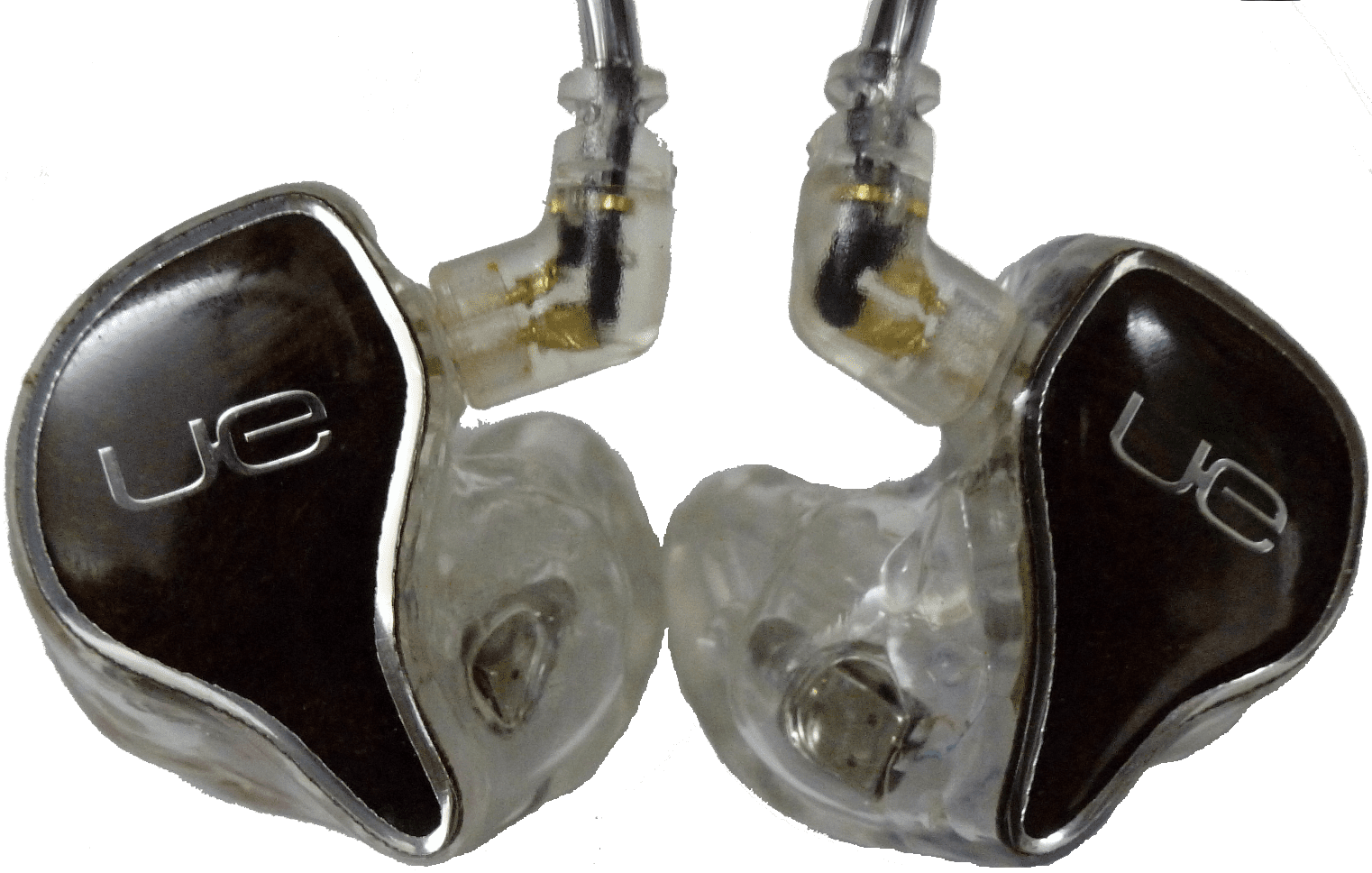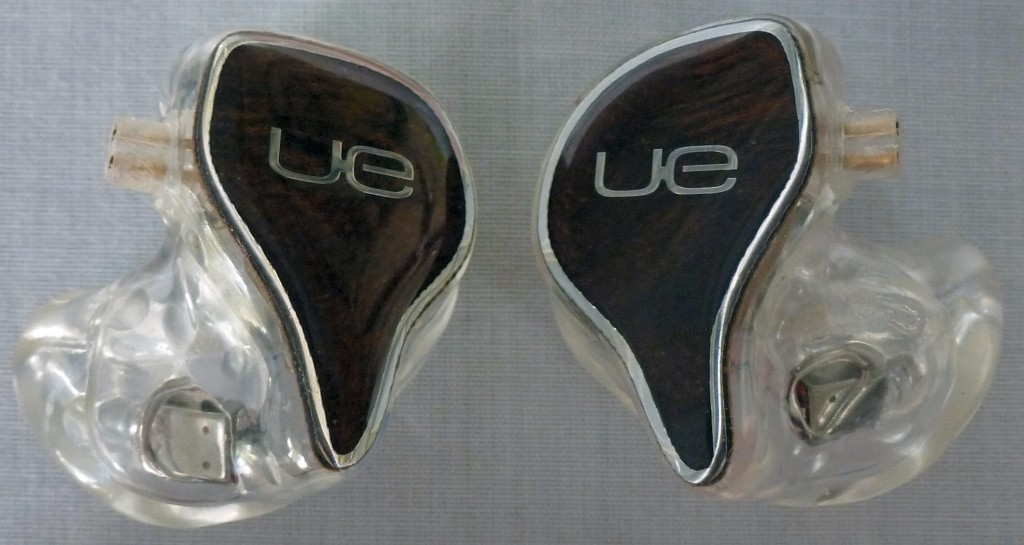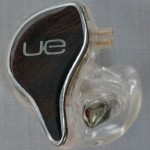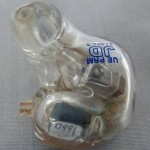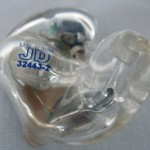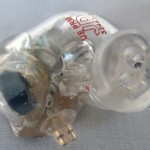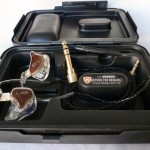Price: $1999
Logitech Ultimate Ears (UE) pioneered custom in-ear monitors (CIEMs), plugging musician’s ears with ear speakers made uniquely for their ears. CIEMs can help musicians achieve the same sound regardless of the venue they perform at and due to the noise isolation, they can reduce the outside noise levels allowing quieter listening that will help protect against noise induced hearing loss (NIHL). In 2008 Logitech bough UE, keeping the existing UE CIEM lineup and just adding to it. Most of UE’s pro product line was designed for stage use, but the post Logitech acquisition models, the In-Ear Reference Monitor (IERM) I previously reviewed and now the Logitech Ultimate Ears Personal Reference Monitor (PRM) are made for other music professionals. The IERM, which I found to be neutral and perform well, was made for sound/recording engineers and designed in conjunction with Capitol Records. The analytical and neutral sound won’t fit everyone’s preference for personal listening, including studio professionals, so the PRM was born.
Being the pioneer that they are, the are the first to create a “custom” custom where the customer gets to tune the sound of their PRM before UE makes it for a monitor that sounds the way the customer wants! If you want more bass, tune it that way, if you have high frequency hearing loss, crank up the treble, and if your ears aren’t balanced, adjust the PRM setting accordingly. The goal is to find the sweet spot for your listening, not the sound the company thinks is right.
HOW TO ORDER, WARRANTY, & OPTIONS
The Logitech Ultimate Ears PRM is available from the Logitech Ultimate Ears website for $1999.00. The PRM is unique in that you tune the sound before you buy, so you had to go to where the tuning boxes were located to tune your monitor. There were select locations throughout the US, but that was limiting. UE has come up with a better solution, a smaller box that can be sent to the customer, allowing people to tune the PRM in the comfort of their own home.
Warranty: 2-year limited hardware warranty
Options: cable length: 48” or 64”; cable color: black or clear; artwork – fine wood veneers: Cherry, Walnut Burl, Carpathian Elm Burl or Purple heart, a finish exclusive to the PRM
SPECIFICATIONS
Input Sensitivity: 110.6 dB @ 1 kHz, 50mV
Efficiency: 115.6 dB @ 1mW
Frequency Response: 20 Hz to 18,000 Hz
Impedance: 21 ohms @ 1kHz
Internal Speaker Configuration: 5 proprietary precision balanced armatures
Noise Isolation: 26 dB Input
Connector: 1/8″ (3.5 mm) gold plated
MY TUNING SESSION
When I had the chance to tune my PRM, I spent a good deal of time tuning the sound and playing around with the limits of the box. During my tuning sessions I used the Spiral Ear SE 5-way Reference as a reference point, and also had my IERM for comparison. An iPod Touch was provided as a source for tuning purposes, however I used my iBasso DX100 with songs I am familiar with. One of the first things I noticed about the PRM was the spacious sound that was as impressive as that of the IERM, and the note thickness and tonal balance sounded more organic than the IERM. Note that the PRM demo is just that, a demo unit, so you will have to rely on ear tips to get a good seal. They provided the standard single flange UE tips and Comply foam tips, however you may want to bring your own if you have other ear tips that work well for you.
 I started my testing with the knobs all six of the knobs at 50, which is neutral. There are three knobs for each channel representing bass, midrange, and treble. Turning a dial to a lower number will increase the amplitude of that part of the frequency response with a maximum of 0, which is around 7 dB change. While 100 represents an approximate 7 dB decrease, slight changes can still take place above 100. There are buttons for each channel that will reset the settings to neutral which will give perspective on how your settings sound compared to the “neutral” of all 50s on the knobs.
I started my testing with the knobs all six of the knobs at 50, which is neutral. There are three knobs for each channel representing bass, midrange, and treble. Turning a dial to a lower number will increase the amplitude of that part of the frequency response with a maximum of 0, which is around 7 dB change. While 100 represents an approximate 7 dB decrease, slight changes can still take place above 100. There are buttons for each channel that will reset the settings to neutral which will give perspective on how your settings sound compared to the “neutral” of all 50s on the knobs.
As I adjusted the knobs, I listened for the best sound for me, compared with the 5-way, and IERM, and listened for technical changes within the sound. The small incremental changes sneak up on you as revealed by pressing the “neutral” button. The largest technical change I noted was with the midrange adjustments, as the imaging and depth of the presentation were slightly reduced as the knob was changed between the extremes. This may or may not occur with the customized PRM as the treble of the real thing is better than the demo. When changing the bass knob, most of the bass spectrum changed adding warmth to the sound which was already warmer than the IERM with a setting of 50. However, deep bass didn’t change which could have been because I was listening to a demo. When the magnitude of the treble was increased I had a similar feel to that of the IERM, however with more smoothness. But, it still wasn’t the highest quality treble I have heard. I ended up with the following tunings:
Treble: 54 (slight decrease)
Midrange: 50
Bass: 45 (slight increase)
I chose the slight boost to the bass because I figured the bass between the demo and real thing would be a bit off. The treble decrease was chosen because I find the IERM bright, and I have experience where some of my customized CIEMs are brighter than the demo units. As it turns out, the PRM was more spot on with the demo, except in the deep bass, and I could have gone with all 50s.
So, how much can the PRM change with tuning? While 7 dB is a good amount of change, it won’t change the note PRAT, and the bass driver won’t allow it to compete in the bass department with a CIEM that has 4 dedicated bass drivers. You can make the PRM a warm and bassy CIEM, a more mid-forward CIEM, although it will never be intimate, and a much brighter CIEM. The changes can make the PRM sound like something quite different than the neutral tuning, the ultimate “how much” question will depend on perspective.
DESIGN
The Personal Reference Monitor utilizes 5 balanced armature drivers per ear in a 3-way configuration (two crossover points). There is a single bass driver, dual midrange, and treble drivers. The shell is acrylic with dual sound tubes and protruding sockets for the cable. One of the sound tubes is larger than the other and both dual element BAs have their own short sound tube within the larger sound tube. The canal portion of the shells is backfilled with acrylic. Custom wood artwork comes standard, however other options are available. The ground channel is the upper socket and the positive channel is the lower socket.
ACCESSORIES
The unboxing experience for the PRM is very nice. The outer box is a nice looking black and contains an envelope with instructions and warranty information. Within that box, there is a metal case that holds the PRM, a cleaning tool, an airplane adapter, and a 1/4” male stereo plug to 1/8” female stereo jack. The PRM also comes with RewardTag, which is a system designed to get your monitors back in your hand if you lose them. There is a sticker on the inside of the carrying case, and if someone returns your CIEM to UE, they will get a reward. Great concept, and one that I can see giving a big sigh of relief for some people, but I am NOT going to lose my PRM!!!
CABLE
UE changed the sockets on their CIEMs, so it is not strange that they changed the cable as well. And all of the changes are positive ones! First, the cable itself is thicker with a very tight braid, minimalist Y-split made from heat shrink, tightly twisted cables above the Y-split, and a heat shrink cable cinch. Ergonomically the UE cable performs as well as a stock cable, yet it seems more robust. The shell connectors are made specifically for the protruding sockets which provide a very secure and stable connection as well as a design that will keep moisture away from the sockets and CIEM internals. The memory wire is shaped to work with the setup and comes out of an angled over-molded plug. Available in either clear or black, I choose black due to the oxidization that the clear cables experience over time. The overall feel of the cable and the connection to the CIEM are very professional.
ISOLATION
The isolation of the PRM is a 6/10 on my scale, which puts it ahead of hollow shelled CIEMs, but below solid acrylic and silicone shells. The increased isolation is due to the acrylic fill of the canals.
SOUND
Disclaimer: My review is a comparative review, and since I have many similarly priced CIEMs, my perspective is based on equal competition. My goal is not to tell you how great the item being reviews is, but to explain the sound signature and characteristics as well as bring you a balanced account of the strengths and weaknesses to help you decide if this particular CIEM is for you. When I listen to CIEMs without any comparison after some time away, I am continually impressed with the sound and it is the contrast that enables my perspective. So take the review as a critical look at the CIEM and realize there will be positive and negative aspects of every product I review and product selection should be based off what sound signature you want or the purpose of your purchase instead of looking for technical top performance.
Quick reference: My review technique, Thoughts on reading a review, CIEM information
The PRM received 100+ hours of burn in as is customary before I do my serious listening. The following CIEMs were used for comparison: Ultimate Ears In-Ear Reference Monitor, Hidition NT-6, Spiral Ear SE 5-way Reference, M-Fidelity (formerly Starkey) SA-43, Heir Audio 8.A, ACS T1 Live!, JH Audio JH16, Earsonics EM4, Rooth LS8, Fit-Ear PS-5, and Unique Melody PP6.
Review Note: Since the PRM is tunable, the quantity of the bass, midrange, and treble are not as important as the quality. My tuning notes discuss some of my findings about how far things can be tuned and changes to the sound.
Bass: The bass is reminiscent of the UE IERM, but with better extension and more warmth. Of course, the bass quantity can be tuned to your preference, but the overall bass has more warmth at the 50 position than the IERM and is smoother with a bit more detail as well as the ability to sustain deep bass rumble better. The deep bass note sustainment, while adequate, is less than the competition save the ACS T1 Live!, which also uses a single BA driver for the bass, but can a CIEM that cost close to half be considered competition? Technically, other than the capability, the bass is excellent with nice levels of detail and impressive layering and texturing in the bass. In bass heavy music, the PRM makes many other bass enhanced CIEMs sound loose in the bass region.
The PRM shines with natural instruments, due to the detail, texturing, and natural tone, but move to bass heavy pop or electronic music and the PRM can’t output the same level as the multi-driver and dynamic counterparts. Even with the bass tuned up, the rumble doesn’t improve as the bass is limited due to the single driver, but the quality of what is present is top notch. You can tune the bass up or down from my settings, however the quality will remain.
Midrange: Spacious and detailed, the midrange is balanced with the rest of the spectrum. The excellent imaging, focus, resolution, instrument placement, and instrument separation along with the large and 3D space result in a very convincing and immersive experience that is focused on the overall presentation. Instruments have high levels of detail, higher than the IERM and on par with others such as the LS8 and JH16, but falling a bit short of the Hidition NT-6 and NT-6 pro as well as the SE 5-way, but resolution is similar to the 5-way and Hidition products. The midrange is very reminiscent of the 5-way, but the upper midrange is more forward and the tonality is different with both sounding “right” in their own way. Overall, the PRM midrange is one of the best out there. With tuning you can pull the midrange closer or push it back, however when those changes are made the depth of the presentation is reduced.
Treble: The treble is well integrated with the rest of the spectrum and reminiscent of the IERM treble, but better in many ways. The IERM treble is analytical and very revealing of any issues, but the PRM treble is a good deal less analytical and not as sharp. I wouldn’t say the PRM treble is smooth and detailed like that of the LS8, 5-way, or even the NT-6 Pro as it is still on the analytical side of the spectrum, but the quality is very good. My tuning is not bright and more in line with the LCD-2 and 5-way. Detail levels are good, but the instrument details aren’t pronounced like in the brighter CIEMs such as the JH16, LS8, NT-6, and NT-6 Pro; however the note decay is natural. While the treble isn’t quite up to the quality of the midrange, it is still is near the top in quality.
Presentation: Let the music flow to you! The PRM doesn’t focus on individual instruments, but has a relaxed presentation that lets you become immersed in the overall presentation of your music. High levels of detail are present but don’t dominate the picture the PRM paints. The PRM gets out of the way of the instruments, not giving you cues to the location of the drivers. Coherence between the drivers is excellent. The ability of the PRM to keep up with fast music when necessary and reproduce the proper warmth when called for is due to the excellent note attack and decay capability. Notes are organic in general, but more analytical than the 5-way, 8.A, and SA-43. Dynamic range is very good as is clarity given the way the music is presented. Listening to the PRM with a good source and well recorded tracks can be a real immersive and engaging experience due to the excellent presentation, which is one of the best out there.
Volume performance: The PRM performs well with channel balance at lower volumes with most sources due to the lower than typical sensitivity, although it is not on the low side. With low volume listening from lower end sources the PRM isn’t as immediate, punchy, and accurate sounding as with better sources, and can have a leaner sound. However, with high end sources such as the 801 or DX100 the PRM dynamics are very good and the sound signature is retained from louder volumes. At the loudest volumes I can handle for a few seconds (which probably isn’t too loud), the PRM performs quite well in the midrange and treble without any congestion, although there is very slight distortion in tracks with heavy and deep bass.
Sound Summary: With the ability to tune the sound signature, the PRM offers the ability for people to find their music preference. Sound is very spacious and laid back with excellent imaging, high detail and resolution levels, excellent transparency, and coherence. Notes are in a very nice balance between analytical and thick resulting in a very organic and natural sound. The focus is on the overall presentation vs. the individual instruments, yet the PRM performs very well in that regard also. The bass will never be dominant, but you do get to tune to your variation of neutral, and the midrange is top notch with an excellent treble. From a technical performance standpoint, the PRM is one of the top performing CIEMs I own. (page 2: Comparisons)
